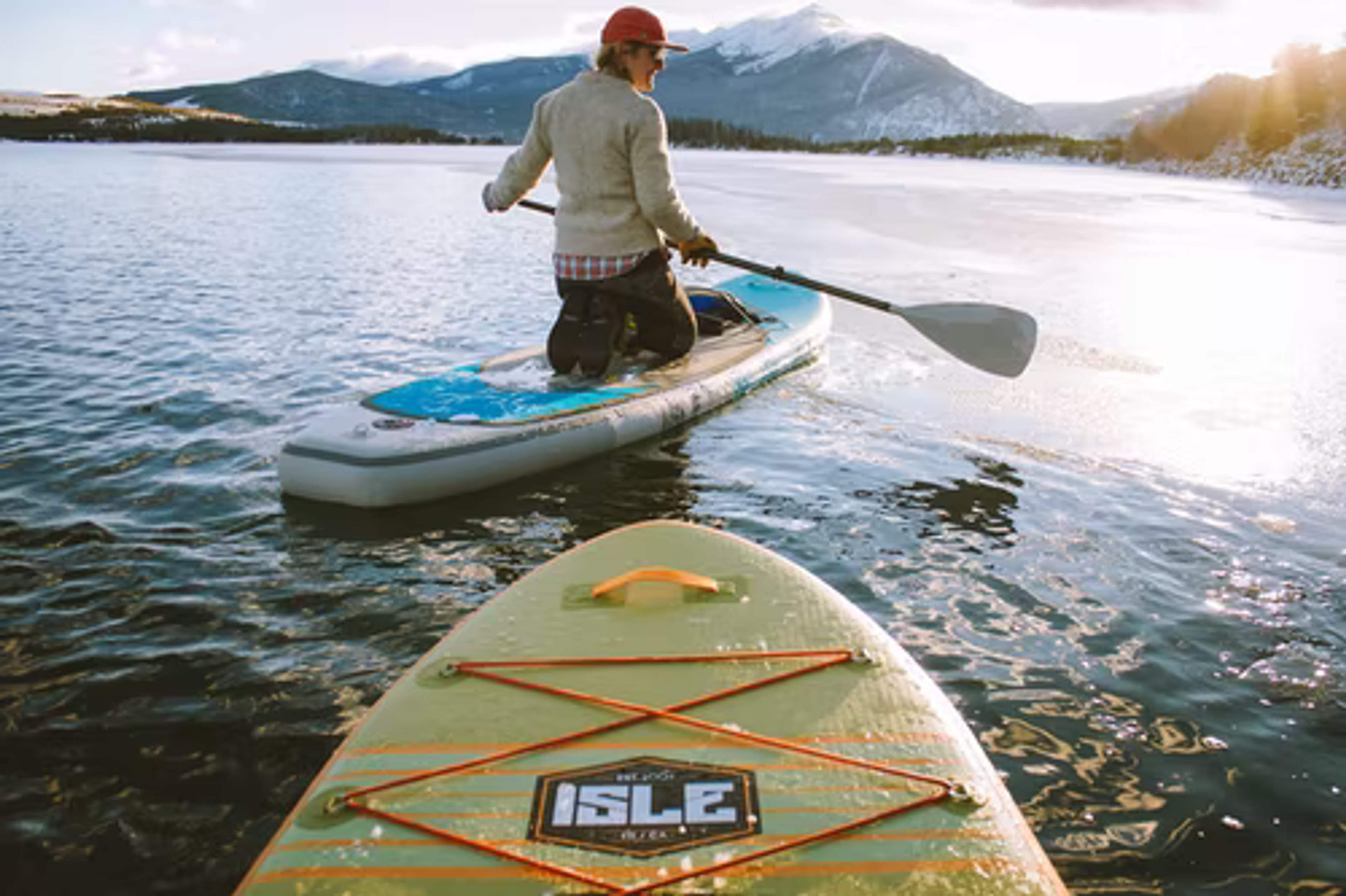Stand-up paddleboarding is a growing sport worldwide and one of the best ways to get fit. There is no better way to enjoy the outdoors while getting some exercise. But which kind of paddle board should you buy if you are looking for easy transportation? This post will go over what you need to look for in a paddleboard and some suggestions on transporting it efficiently.
Things To Look For In A Paddleboard
Stand-up paddleboarding is a popular sport gaining traction in recent years. It is a great way to enjoy the outdoors and exercise simultaneously. A stand-up paddleboard, or SUP, is a board that is designed to be used while standing on it. It can be used for many different purposes, such as surfing, paddling, and racing. But what should you look out for when in the market for one?
Hull Type
The type of hull you opt for will significantly impact how you use the board. The hull shape gives the board extra stability in the water and allows it to cut through waves without getting tossed around too much. The boards are typically designed for surfing in deep water, but some models can also be used in shallow waters. There are two options when it comes to the type of hull.
Planing Hull
A planing hull is comparable to a surfboard in that it is flat and broad. It’s made to float on top of the water and is exceptionally agile.
Displacement Hull
SUPs with displaced hulls feature a pointed bow like kayaks and canoes. In order to improve efficiency and provide a quick, smooth ride, the hull cuts through the water, forcing water around the front to the sides of the SUP, making them far quicker in the water than a planing hull.

Do You Need Solid Or Inflatable?
An inflatable stand-up paddleboard is a great option for people who need the flexibility to travel anywhere. It’s lightweight and easy to transport, making it perfect for people who live in areas where the water is too cold or dangerous and need to travel elsewhere. It also has all the necessary safety features that make it safe to use on open waters. When searching for easy to transport inflatable sup boards, you should ensure the materials used in its construction are durable enough to withstand bumps and scrapes. An inflatable stand-up paddleboard is lightweight and easy to store and can be folded or rolled into a small size that makes it easy for transportation purposes. On the other hand, a solid paddleboard is usually made of fiberglass and designed to be more durable and efficient throughout the water. However, what you gain in performance, you lose in transportability.
What Weight Capacity Do You Need?
The weight capacity of a stand-up paddleboard is another essential factor to consider when choosing what type of board to buy. A lightweight board with a low weight capacity may not be able to support the paddler’s weight, or the paddler may be unable to control the board if it becomes overloaded with too much gear or people on it.

What Length Do You Need?
Stand-up paddleboard length is an important factor in determining how effective a paddleboard is. A shorter board can be more challenging to balance on, while a longer board can be more stable and easier to paddle. Generally speaking, there are three lengths to choose from:
- Short
- Medium
- Long
Consider How Wide You Want It To Be
Another crucial feature that impacts how the board behaves is its width. A broader board will be much more stable than a narrow board, but consider that a wide board is more challenging to paddle if it is too broad. Additionally, a board with a wider width will be slower as it can’t cut through the water as efficiently as a skinny board.
How Many Fins?
Fins are used to improve the performance of the stand-up paddleboard. They can be made from different materials but are typically made from hard plastic. The material that is used for the fin will depend on what you plan to do with it. Fin configuration on the bottom of your SUP may be accomplished in a number of ways. The most common SUP fin setups include:
- Single
- Three fin
- 2+1
How To Safely Transport Your Paddle Board
One of the most important things to remember about transporting your stand-up paddleboard is that it should be adequately secured. It’s best to use a padded board bag with straps or a board bag with an integrated carry handle. Inflatable boards are undoubtedly the easiest to transport, but you still have to take care, so you don’t damage the material. If you’re looking to transport your stand-up paddleboard safely, it’s essential to know what you’re doing and how to do it correctly.
Use A Soft Rack
Soft racks are meant for vehicles without a roof rack. Instead of employing a solid crossbar like a metal rack, these racks use foam pads placed on the roof of your car.
Add A Roof Rack To Your Car
The best way to transport your paddle board on the roof is to use a roof rack, but not all racks are suitable for this purpose. The two most important things that you should look out for when selecting a rack are the load capacity and the shape of the rack itself.
Use Pickup Truck Bed
If you are lucky enough to own a pickup truck, you can simply place your boards in the bed. You will have to secure them properly using lashes, and if you are transporting several boards, ensure to put some material between each board.
Use A Trailer
If you don’t have a truck, you can always use a trailer to achieve the same outcome. As with a truck, you should secure them correctly to keep them from getting damaged.
Stand-up paddleboarding is an activity that is accessible to many people, and there are many places to buy a stand-up paddleboard. However, one should be aware of the types of materials used and the level of quality before making that purchase.


Comments are closed.